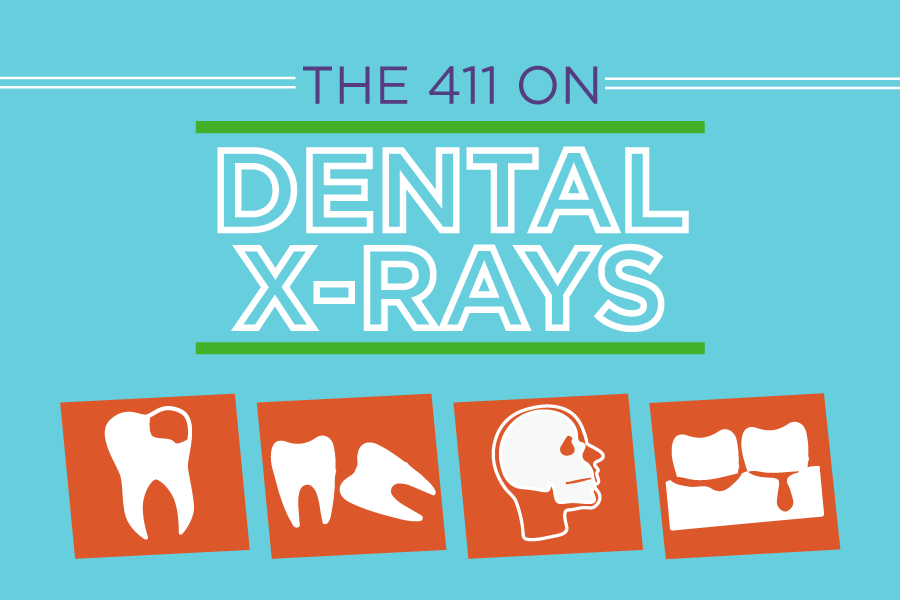Facts About Dental X-rays [Infographic]
By Shelby Tatomir on June 4, 2019 in Just for Kicks

X-rays are an important tool for dental treatment because they can detect things we can’t see with the naked eye. Whether it’s a broken bone or damage to teeth and gums, x-rays allow things to be seen that could go unnoticed during a routine visual exam. So, what does that mean to you? It allows your dentist to catch potential problems before they cause you discomfort. X-rays can help your dentist find:
Cavities – When we don’t brush and floss regularly, a sticky, fuzzy substance of bacteria forms on our teeth. This is called plaque. The bacteria consume sugar from the things we eat and create This acid stays on our teeth and attacks the outer surface of our enamel. Over time, the acid breaks down the enamel and causes a cavity! X-rays can help dentists spot the beginnings of a cavity and treat them earlier before they increase in size or become painful.
Impacted teeth – Between ages 17 and 21, our mouths experience a change as our third molars, or “wisdom teeth” come in. X-rays are a very helpful tool when it comes to wisdom teeth growth. We can use x-rays to see if the new tooth will impact the existing teeth. If the dentist says your teeth are impacted, it means that they are trapped in your jaw or under your gums. Click here to learn more about wisdom teeth removal.
Abscesses (toothache) – When left untreated, tooth decay, periodontal disease, or a crack in a tooth can cause an abscess to form. This means that bacteria have entered the soft tissue in your gums. Our gums contain nerves, blood vessels, and connective tissues, and is a very important place in your mouth. When it’s infected, many different things can become compromised. The bacteria form a pocket of pus, which is called the abscess. This can lead to serious infection in the jaw bone, teeth, and surrounding tissue. A root canal surgery may be necessary to resolve.
Abnormal growths, such as cysts and tumors. Growths can form in any part of the mouth’s tissue including connective tissues, bone, muscle, and nerve. X-rays can detect them in places that the naked eye can’t see.
These dental conditions like cavities and toothaches are about as fun as they sound, so do your part to take the risk out of your oral health. All dental patients should allow their dentist to take dental x-rays because they’re a great, noninvasive method for learning more about the health of your mouth. Dental x-rays are covered at different time frequencies depending on your plan – be sure to check your specific plan to see how often they’re covered. Remember to brush twice a day for two minutes and floss after meals. Limit your beverages to tap water, as this can greatly reduce your risk of cavities.
Want to take a closer look at dental x-rays? Check out our infographic:

Are you pregnant?
Make sure to inform your dentist if you are pregnant or trying to get pregnant. You may need to have X-rays taken as part of your treatment plan for a dental disease. Use of the leaded apron and thyroid collar will protect you and your bun in the oven from unnecessary radiation exposure.
Dental X-rays don’t need to be delayed if you are trying to become pregnant or are breastfeeding.
Looking for more? Check out:
• The Inventor of Cotton Candy was Actually a Dentist